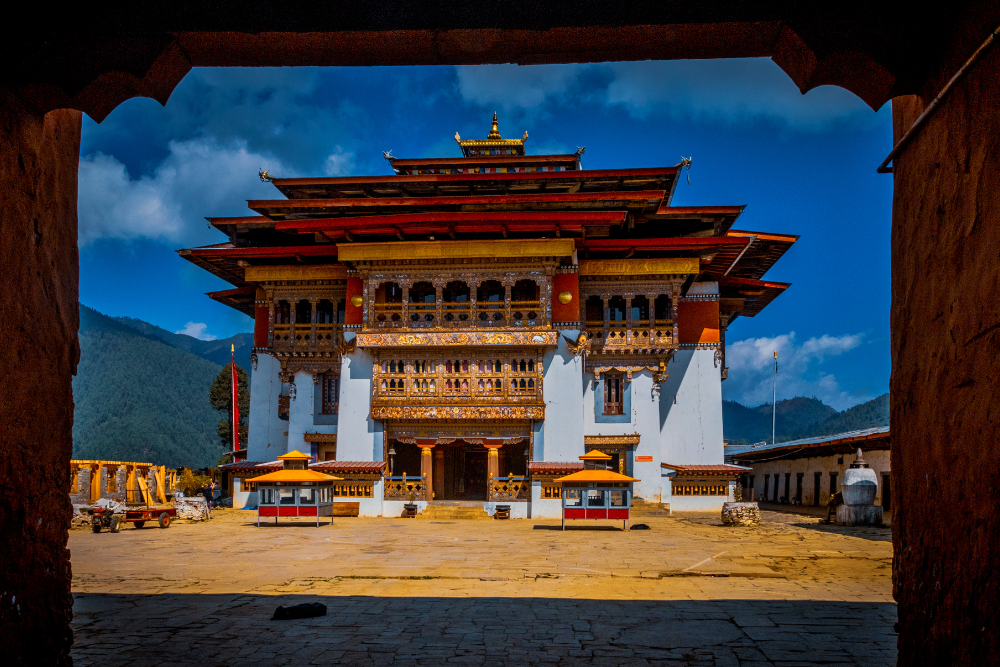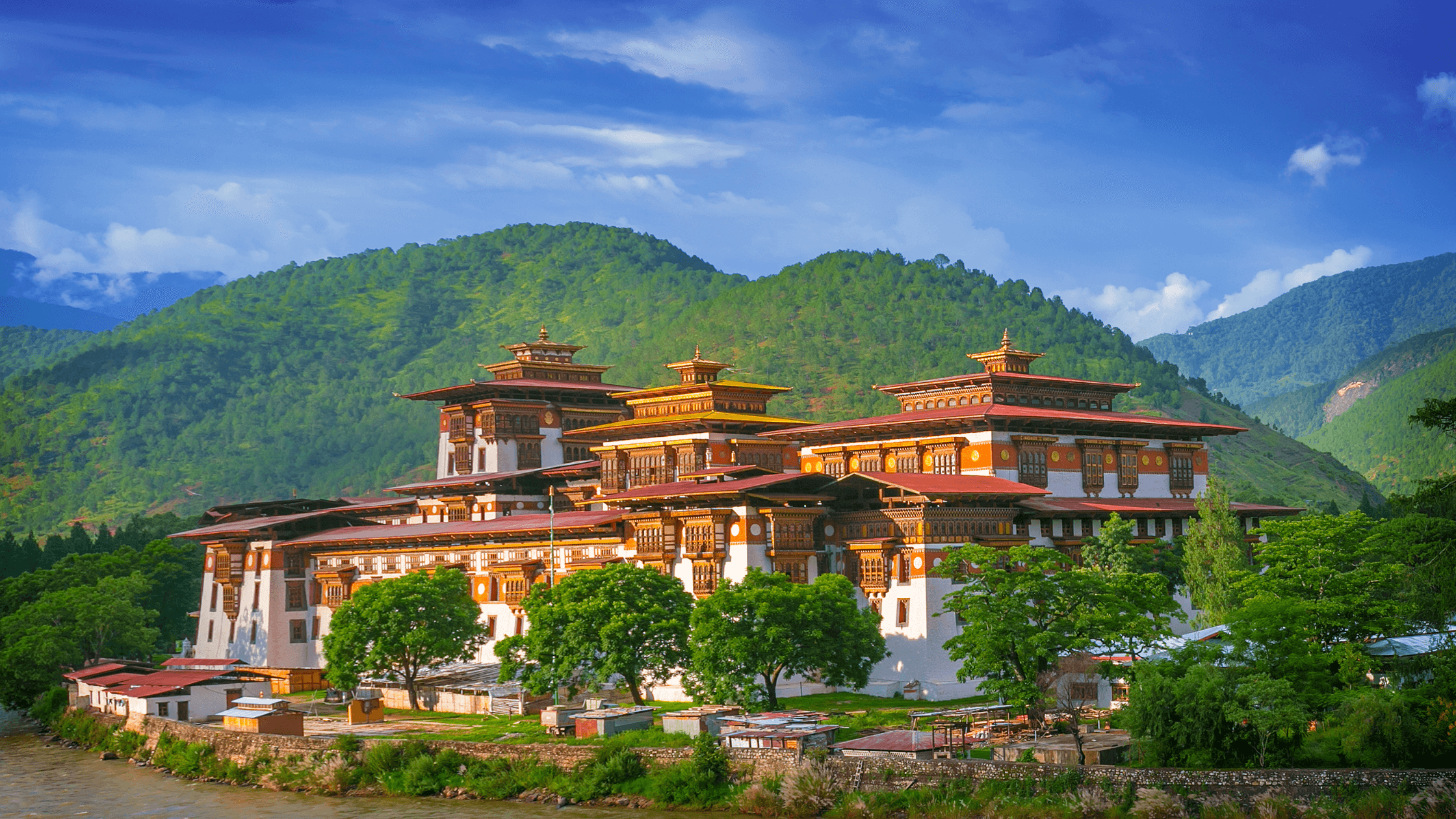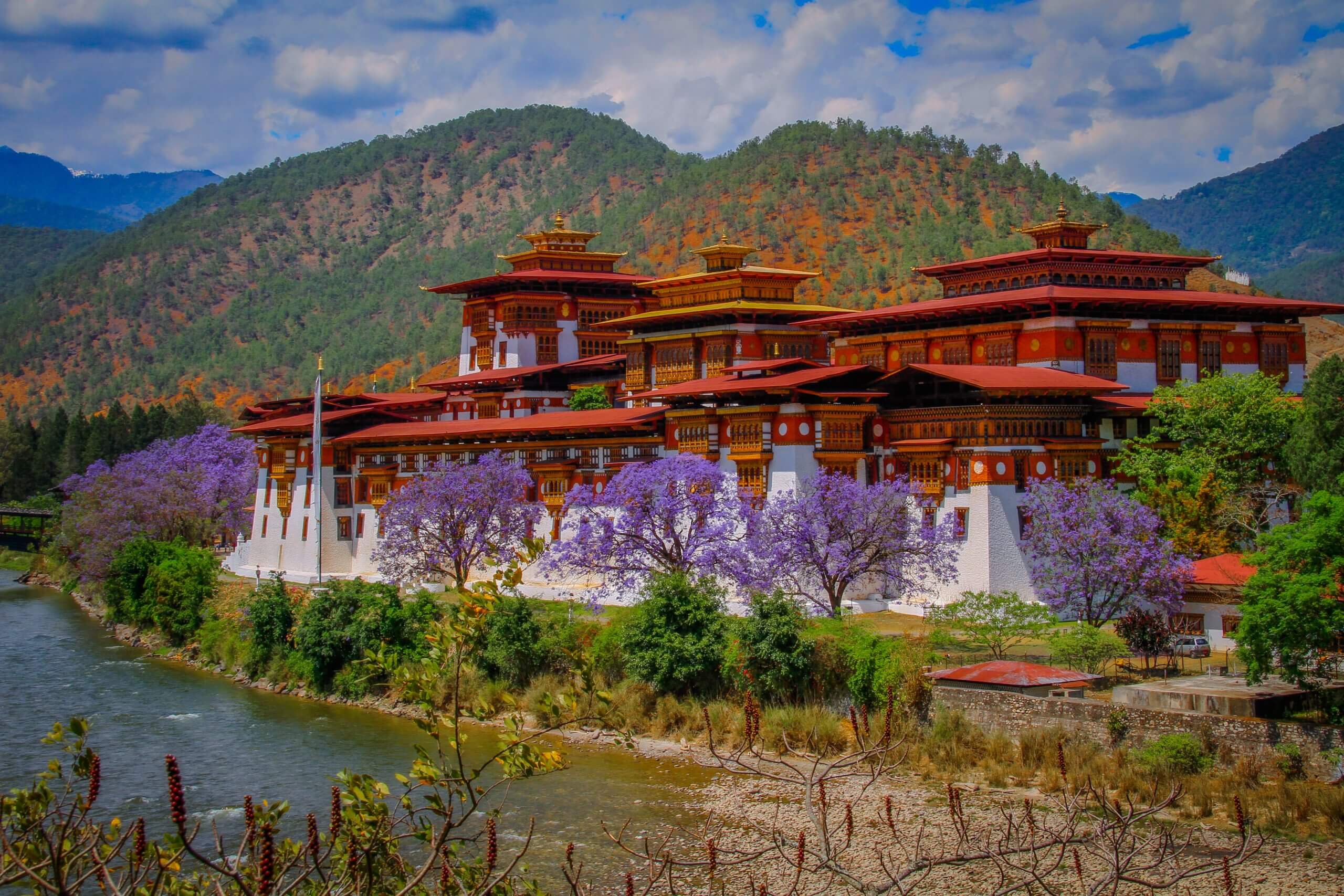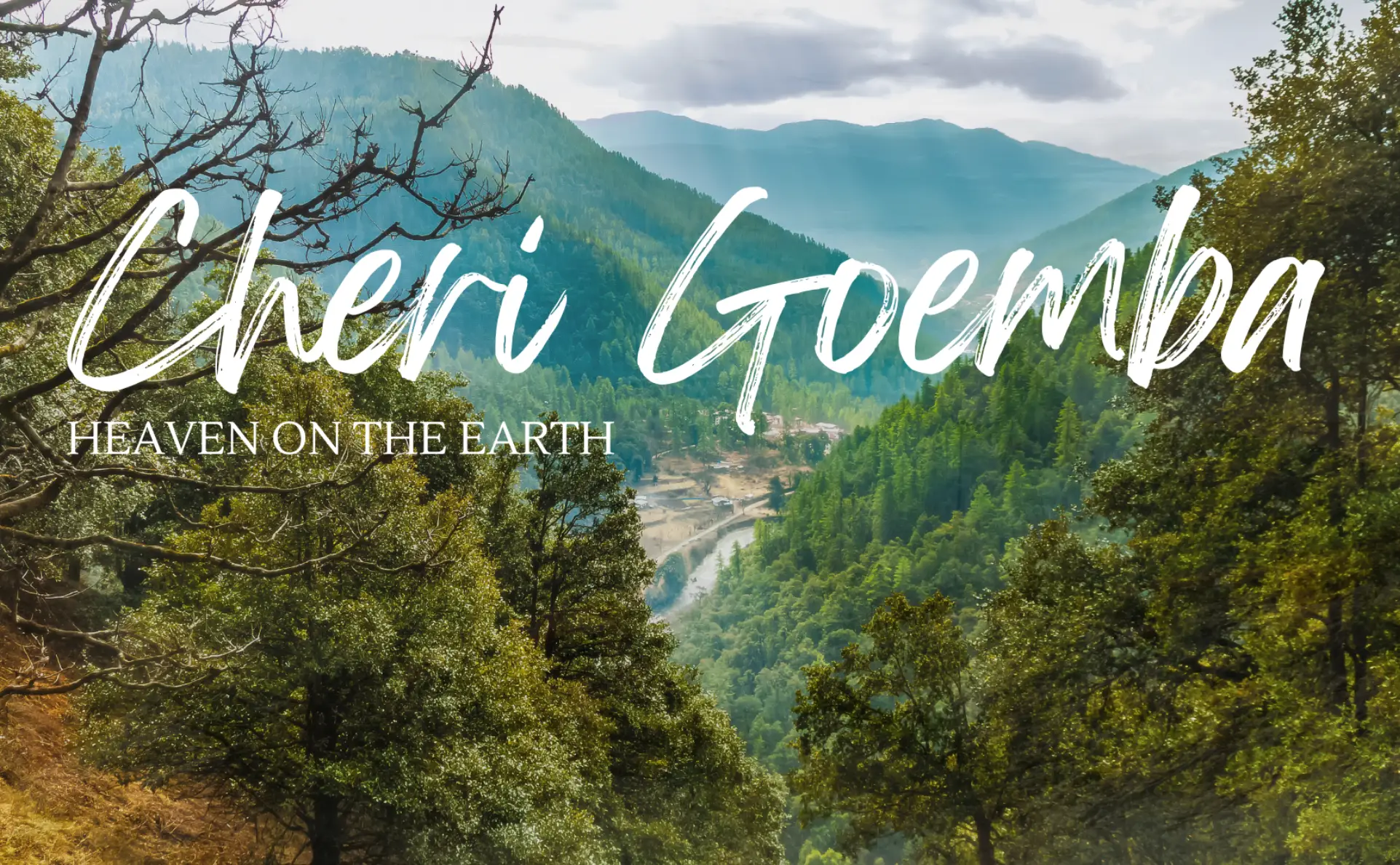Top 10 Festivals Celebrated in Bhutan 2024
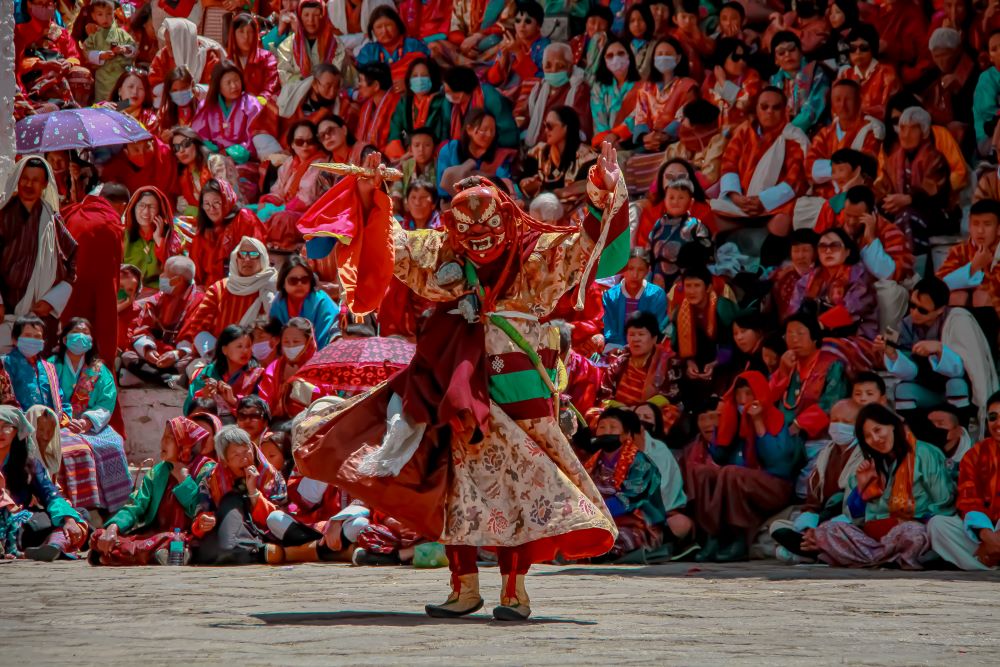
If you’re planning to explore the vibrant culture and rich traditions of Bhutan, there’s no better way than by immersing yourself in the country’s spectacular festivals. Bhutan, the land of the Thunder Dragon, is known for its rich cultural heritage and deeply rooted Buddhist traditions. Among the many religious festivals celebrated in this Himalayan kingdom, Tshechu stands out as the most important and vibrant of them all. Also known as the Mask Dance Festival, Tshechu is a time of spiritual devotion, cultural celebration, and social gathering for the Bhutanese people.
With a Bhutan festival tour, you can experience the country’s unique blend of spirituality, history, and community. You shouldn’t miss the top 10 festivals in Bhutan, mainly the Tsechus.
Tsechu is a religious festival meaning “tenth day” held annually in various temples, monasteries and Dzongs throughout the country. Tshechus are grand events where entire communities come together to witness religious mask dances, receive blessings and socialize. In addition to the mask dances, tshechus include colorful Bhutanese dances and other forms of entertainment. The presence of Dzongs across the country symbolizes unification and the recognition of a central authority by the people in the region.
Some of the notable dance that are performed in the festival are:
- Dance of Stag and Hounds (Shawo Shachi): This biographical drama, inspired by eleventh-century Tibetan yogi Jetsun Milarepa, portrays his transformative encounter with hunter Gonpo Dorje. Through songs of compassion, Milarepa turns the hunter into a Buddhist disciple, highlighting the power of compassion and forgiveness.
- Dance of Lords of Cemetary (Durdag): Four dancers, clad in skeletal attire and skull masks, enact a dance representing life’s impermanence. Their thunderous steps summon negative forces, underscoring life’s transient nature. Bending backwards and touching the ground with their masks symbolises the summoning of earth deities.
- Dance of Terrifying Deties (Tungam Cham): This dynamic dance embodies the wrathful deities safeguarding Buddhist teachings. Dancers don elaborate masks and costumes, embodying the fierce, protective nature of these beings. Their captivating movements evoke awe and reverence, showcasing the strength and power of these divine guardians.
- Dance of Judgement of Dead (Bardo Raksha Mangcham): This dance depicts the judgment day following a person’s passing. In Buddhist tradition, the departed soul wanders for seven weeks before facing judgment. The performance shows the soul presented to the Lord of Death, with the Black Demon and White God recounting their deeds. The Lord of Death then decides their next rebirth based on these accounts.
- Dance of 8 Manifestations of Guru Padsambhava: This dance highlights the eight manifestations of Guru Rinpoche, each representing distinct facets of his spiritual journey. Peaceful forms symbolize compassion and wisdom, while wrathful forms depict the triumph over negativity. Bhutanese performers honor Guru Rinpoche’s teachings and draw inspiration from his diverse representations through this dance.
- Along with the performance another important part of the Tsechu is the Unfurling of Thongdrol: which means Liberation at Sight. This comes from the belief that seeing an aesthetically proportioned Buddhist image plants a seed of enlightenment in the viewer’s heart. That seed matures into the liberation of one’s mind and frees us from endless rebirths of suffering. Thongdrol also means large silk appliqué thangkas (painting) that are displayed for a few hours during important religious ceremonies in Bhutan. The sacred Thongdrol of Guru Rinpoche is displayed early in the morning on the last day of the Tshechu.
-
Thimphu Tshechu

The Thimphu (the capital city of Bhutan) Tshechu is celebrated on the 10th day of the 8th lunar month which in the Gregorian calendar falls in September. It is among the largest and most visited festivals held in the capital of Bhutan; This grand event, normally held in the courtyard of Tashichho Dzong is a colourful affair. Cham is a series of mask dances usually exhibited by the monks dressed in various colourful brocades. Every single dance has strong religious connotations and usually represents the fight between good and evil forces and reflects certain historical events and lessons taught by Guru Rinpoche. While it is a religious event, it has more to do with the social aspect as well, as people from different parts of the country gather to watch the performances, get blessings and indulge in the festive atmosphere. It is an event marked with joy, devotion and community spirit making it a fulfilling event that none attending would forget. The festival starts with Thimphu Drubchen for a day and the next three days for Tsechu and the final day is considered the most auspicious day which includes the unfurling of Thongdrol. The sacred Thongdrol of Guru Rinpoche is displayed early in the morning on the last day of the Tshechu. On such occasion, the festival venue fills with people at dawn in freezing cold.
-
Paro Tshechu
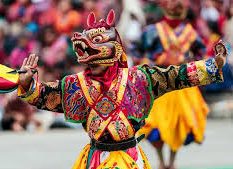
The next popular festival is known as Paro (the western part of Bhutan) Tshechu which is also celebrated with much reverence throughout Bhutan. Occurring annually in the immaculate premises of Paro’s fortress/courtyard, the festival is characterized by the monks performing with masks and they go through various dramatic and ritualistic dance moves that re-enact stories from Buddhism. These performances are not only sensual but are also imbued with spiritual significance, considered to confer blessings and security to the crowd. The climactic event during Paro Tshechu is the unveiling of a gargantuan Thangka, a religious tapestry that is unrolled during the early morning on the final day. It is one of the second most popular Tsechu in Bhutan besides Thimphu Tsechu. It fall on mid to late march.
-
Punakha Tshechu

Punakha Drubchen and Tshechu are consecutive festivals held in Punakha, the historical centre of Bhutan with deep insights into the Bhutanese traditions and history. Punakha Drubchen is famous for the celebration of the victory against the Tibetese invasions in late 17th century, demonstrating the strength of Bhutanese. Subsequently, Punakha Tshechu enchants participants with its masked dances and religious ceremonies: revealing the spirituality and artistry of Bhutan. Altogether, these festivals make people present get an understanding of the martial and spiritual history of Bhutan as well as the identity of the country. Long time ago Punakha was the Captial of Bhutan, today it proudly presents one of the second largest Dzongs in Bhutan. The festival falls on mid to late february every year in Bhutan.
-
Jambay Lhakhang Drup

Jambay Lhakhang Drup is a very special festival performed at Jambay Lhakhang, one of the oldest temples of Bhutan situated in Bumthang. It is most famous for its fire ritual, the Mewang, which is performed to cleanse sins and victory of good over evil. Another attraction is the ‘Tercham’, or the ‘naked dance,’ which is done with religious intent to bless infertile mothers and bring forth childbirth. Famous for its historical themes and traditions combined with religious practices, the festival has become a unique opportunity to plunge into the enigmatic atmosphere of Bhutan’s spiritual life and discover various facets of the culture and tradition of the country. It is celebrated around the mid of November every year.
-
Ura Yakchoe

Ura Yakchoe stands out as one of Bhutan’s most pious and religious festivals, steeped in centuries-old traditions and deep spiritual significance in Bumthang. This sacred dance is performed alongside other popular folk dances, all in reverence to a sacred relic believed to bestow blessings upon its worshippers. Devotees from far and wide journey to participate in the festival and pay homage to the sacred relic, seeking its divine blessings. According to historical references, the relic was left behind by a revered lama and has been passed down through generations, symbolising a sacred link between the past and the present, and embodying the enduring spiritual heritage of Bhutan. The celebrationn falls on mid to late april.
-
Royal Highland Festival

The Royal Highland Festival showcases the beauty and wonders of Gasa Dzongkhag through its nature, history, and age-old traditions and culture, sharing Gasa’s vision of “Good to Great Gasa.” Held at Laya in the Gasa District, 4000m above sea level, the festival was first introduced on October 16, 2016, to celebrate the birth of HRH the Gyalsey, 400 years of Zhabdrung Rinpoche, and the Rabjung (60-year cycle) birth year of Guru Rinpoche.
During the festival, visitors can witness the traditional offering of Buelwa (Gift offering) with Auley (a traditional epic poem/song recitation originating from Zhabdrung Rinpoche’s days) performed by the community of Laya to show loyalty and respect to the visionary leadership of successive monarchs. The festival features a variety of cultural programs performed by Layaps, including competitions involving highland animals like yaks, horses, and mastiffs, as well as traditional songs and dances.
The festival also includes a series of stalls offering local yak products, highland technology, highland agricultural technology, and medicinal herbs and plants. The plateau hosting the festival provides a panoramic view of the Himalayan ranges. Visitors stay in tents set up by the nomadic people of Lunana and Laya, allowing them to roam the high plains and interact with the highlanders. This unique experience attracts about 200 attendees each year.
-
Haa Summer Festival

The Haa Summer Festival, taking place in the Haa valley, unlike most of the other festivals in Bhutan are not performed in the fall or spring but during summer. The Haa Valley is an ideal place to visit, especially during the hot summer months because the weather is much cooler here. As a lively event, the festival gives snap shots into the lives of people in the community. The Festival also includes performances of lively mask dances, traditional songs, arts, and crafts, as well as traditional games and sports. Visitors can also complement their trip by involving themselves in a homestay where they get to be hosted by the friendly people of Haa Valley and spend a night with them.
-
Black-Necked Crane Festival

The Black-Necked Crane Festival is held in the Phobjikha Valley to celebrate the arrival of the endangered black-necked cranes that migrate to Bhutan for the winter. The festival includes crane dances performed by school children, cultural programs, and educational activities aimed at conservation.The unique festival is a clear indication of how the society needs to embrace the efforts of conserving and cherishing the environment.
-
Dochula Druk Wangyel Festival

The Druk Wangyel Tshechu, held annually on December 13th at the Druk Wangyel Lhakhang temple in Dochula Pass, commemorates the bravery of the Royal Bhutan Army and the fourth King of Bhutan, His Majesty Jigme Singye Wangchuck, for their successful military operation in December 2003. Initiated in 2011 by Her Majesty the Queen Mother Ashi Dorji Wangmo Wangchuck, the festival features unique mask dances performed by army members, traditional Bhutanese attire, and panoramic views of the Jigme Singye Wangchuck mountain range. Unlike other tshechus, it occurs during the winter, offering a less crowded and more affordable experience while promoting national unity and patriotism among the Bhutanese people.
-
Chorten Kora Festival

The Chorten Kora festival is one of the most popular festivals in Eastern Bhutan. “Kora” means circumambulation, and this festival involves circling the Chorten Kora temple in Trashi Yangtse. Held annually, Drukpa Kora occurs around March 15th, and Dakpa Kora takes place around February 28th.
Legend has it that the stupa took 12 years to complete. Modeled after Nepal’s iconic Boudhanath stupa, it was built by Lama Ngawang Loday in 1740 in memory of his late uncle, Jungshu Pesan. The chorten was created so pilgrims could visit Trashiyangtse instead of traveling to Nepal. Additionally, a young girl from Tawang, Arunachal Pradesh, believed to be a Khando (dakini), agreed to be buried alive inside the chorten. Due to this, the Dakpa Kora ritual is held every year, attracting hundreds from Arunachal Pradesh, known as Dakpas, who come to circumambulate the chorten.
Experiencing these festivals offers unparalleled insight into Bhutan’s rich cultural heritage. Each festival, with its unique flavor and essence, enhances the magical allure of the Kingdom of Bhutan. These events signify the country’s commitment to preserving its identity amidst a rapidly changing world.
To make the most of your visit, consider booking through a travel agency for Bhutan, ensuring a seamless and enriching experience.
Conclusion: Explore Bhutan with our trusted Bhutan travel agency and embark on a journey that immerses you in the country’s rich traditions, vibrant culture, and breathtaking landscapes. Let us take care of every detail, ensuring a seamless travel experience that leaves you with unforgettable memories of Bhutan’s hidden gems.

